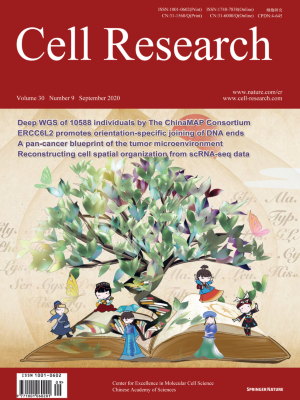
Advanced Search
Submit Manuscript
Advanced Search
Submit Manuscript
Volume 30, No 9, Sep 2020
ISSN: 1001-0602
EISSN: 1748-7838 2018
impact factor 17.848*
(Clarivate Analytics, 2019)
Volume 30 Issue 9, September 2020: 763-778 |
Reconstruction of cell spatial organization from single-cell RNA sequencing data based on ligand-receptor mediated self-assembly
Xianwen Ren* , Guojie Zhong , Qiming Zhang , Lei Zhang , Yujie Sun , Zemin Zhang*
Beijing Advanced Innovation Centre for Genomics, Peking-Tsinghua Centre for Life Sciences, Biomedical Pioneering Innovation Center (BIOPIC), School of Life Sciences, Peking University, 100871 Beijing, ChinaSingle-cell RNA sequencing (scRNA-seq) has revolutionized transcriptomic studies by providing unprecedented cellular and molecular throughputs, but spatial information of individual cells is lost during tissue dissociation. While imaging-based technologies such as in situ sequencing show great promise, technical difficulties currently limit their wide usage. Here we hypothesize that cellular spatial organization is inherently encoded by cell identity and can be reconstructed, at least in part, by ligand-receptor interactions, and we present CSOmap, a computational tool to infer cellular interaction de novo from scRNA-seq. We show that CSOmap can successfully recapitulate the spatial organization of multiple organs of human and mouse including tumor microenvironments for multiple cancers in pseudo-space, and reveal molecular determinants of cellular interactions. Further, CSOmap readily simulates perturbation of genes or cell types to gain novel biological insights, especially into how immune cells interact in the tumor microenvironment. CSOmap can be a widely applicable tool to interrogate cellular organizations based on scRNA-seq data for various tissues in diverse systems.
https://doi.org/10.1038/s41422-020-0353-2